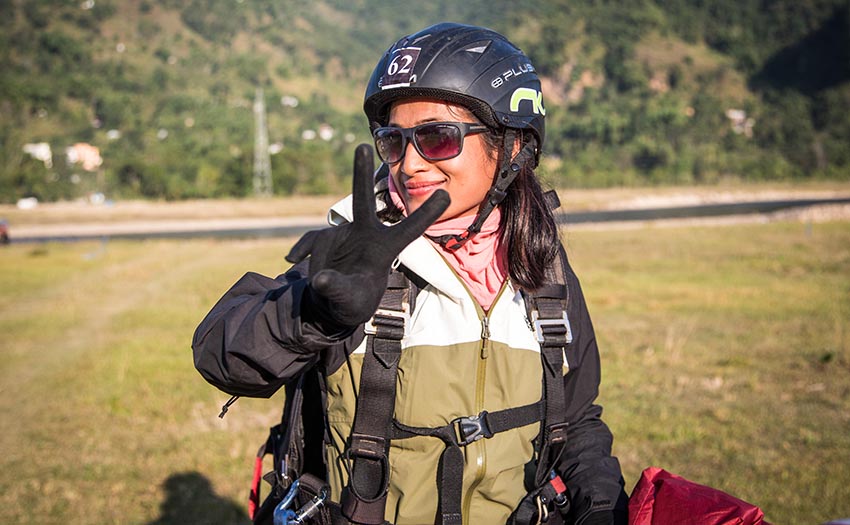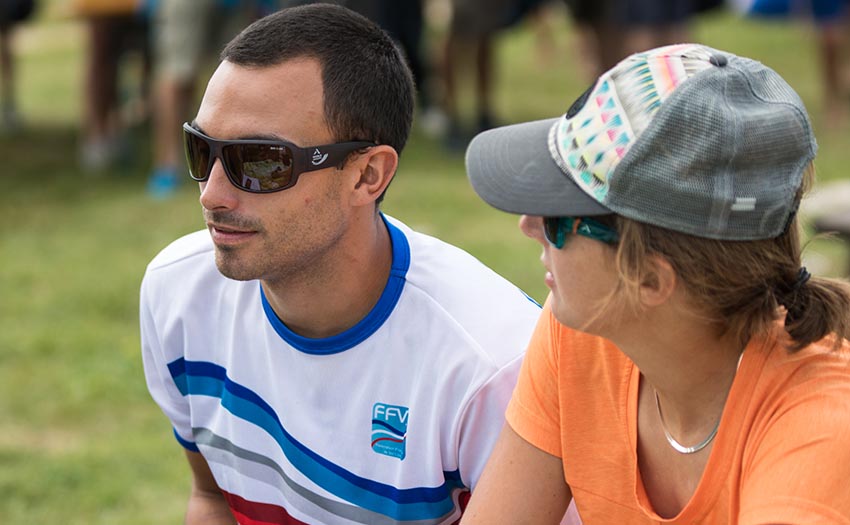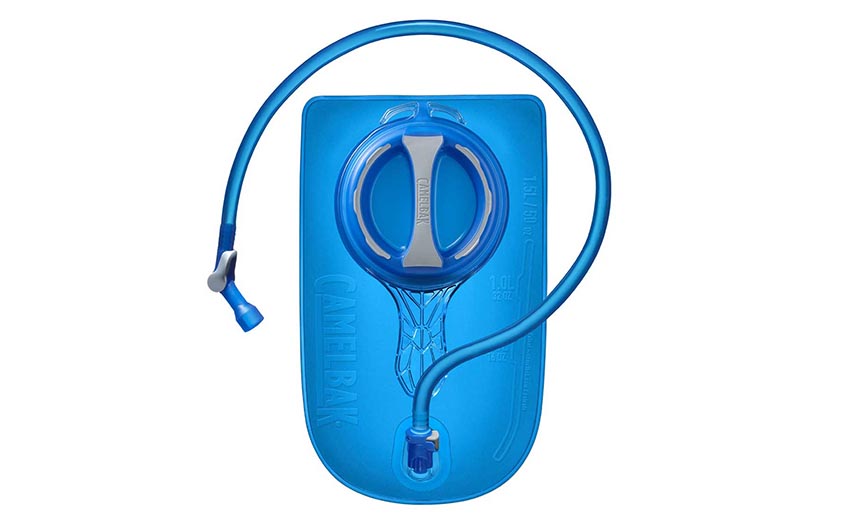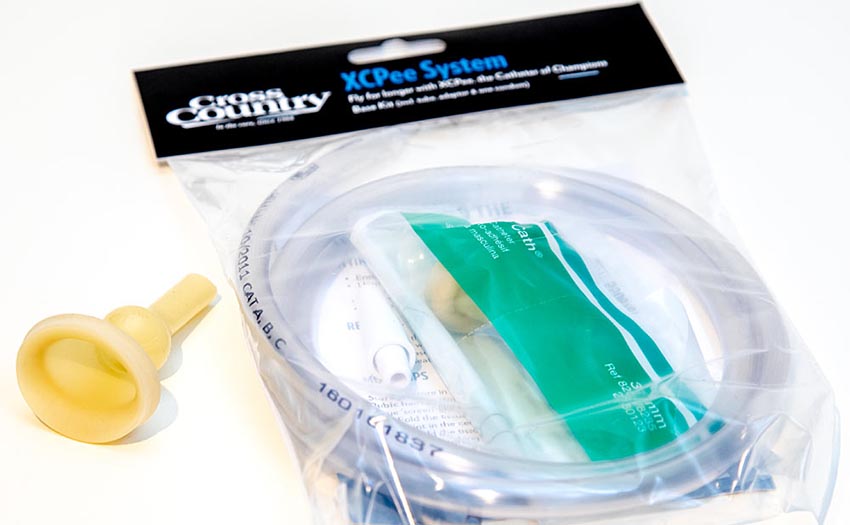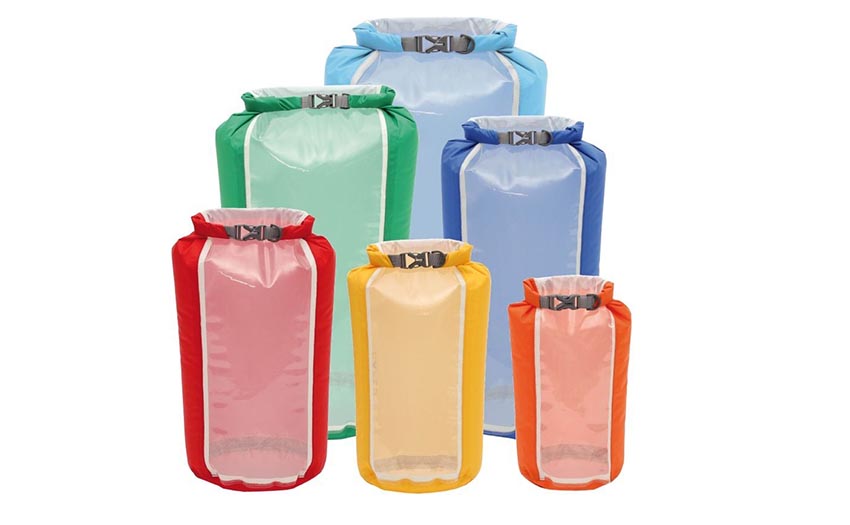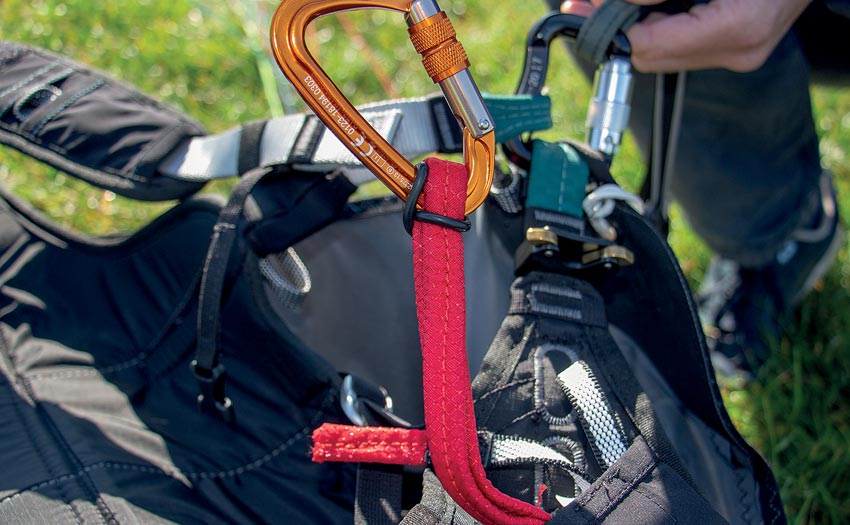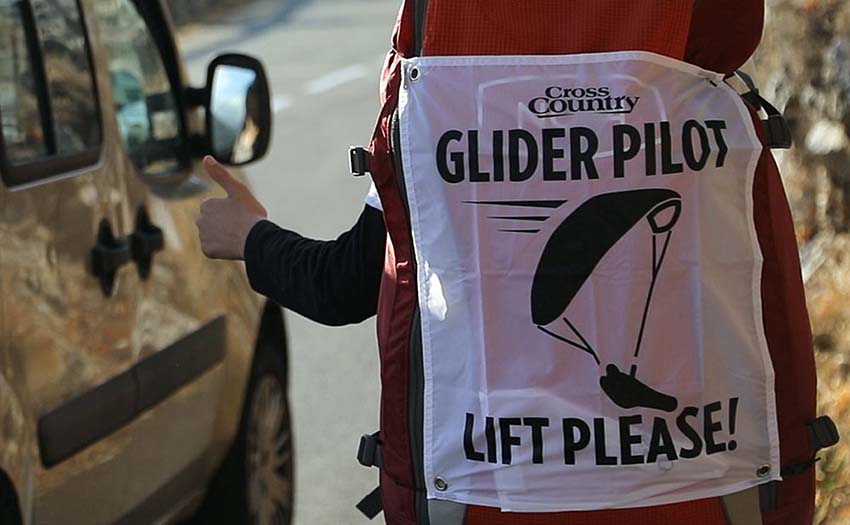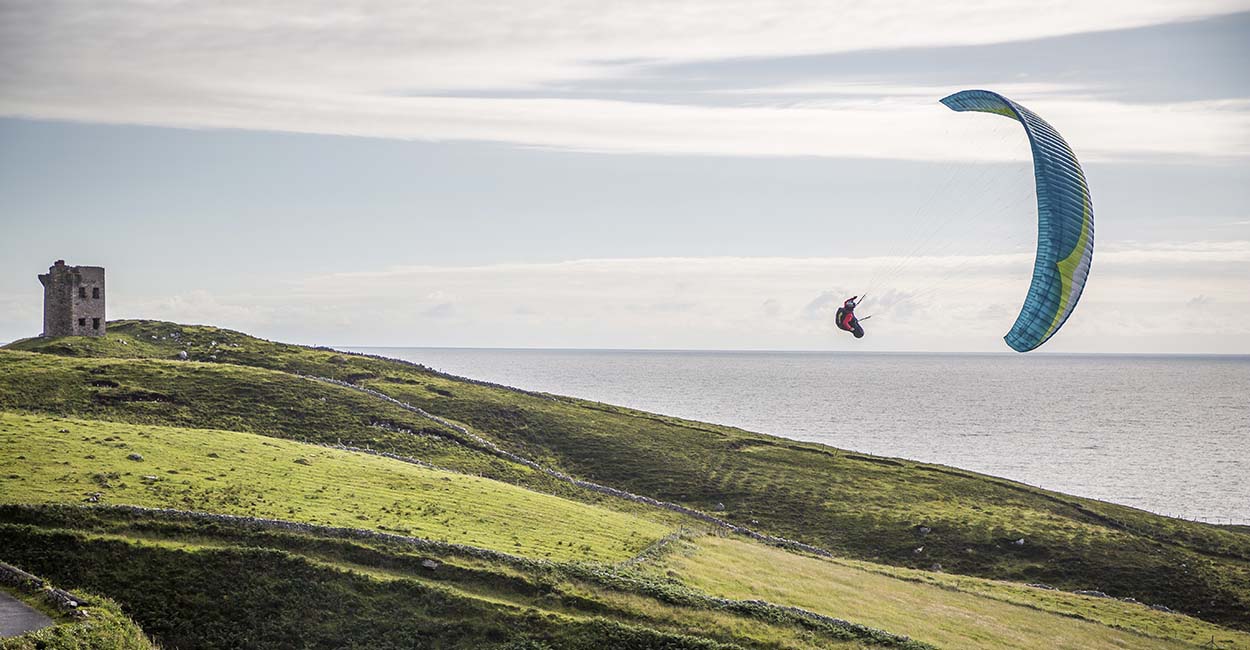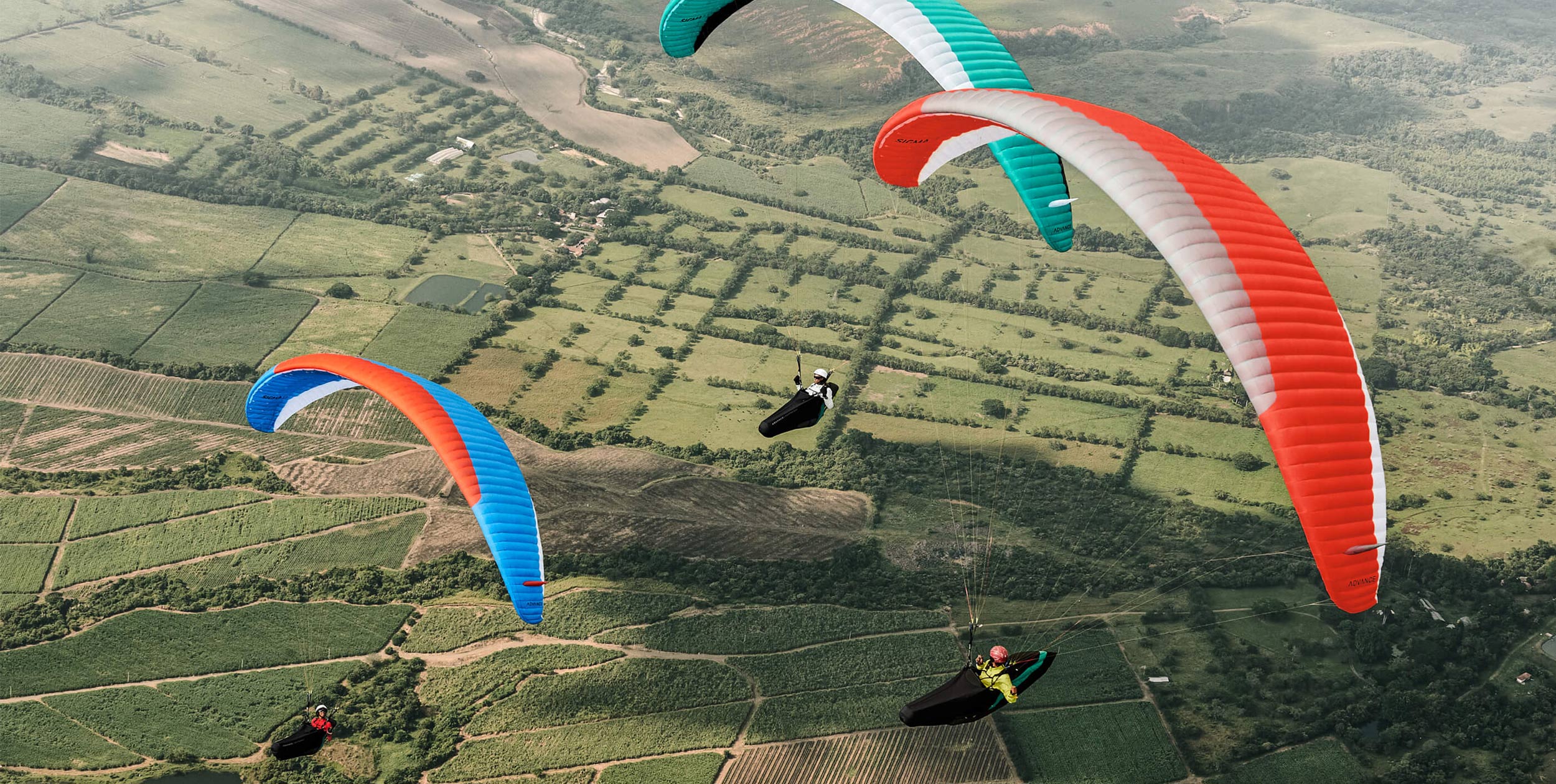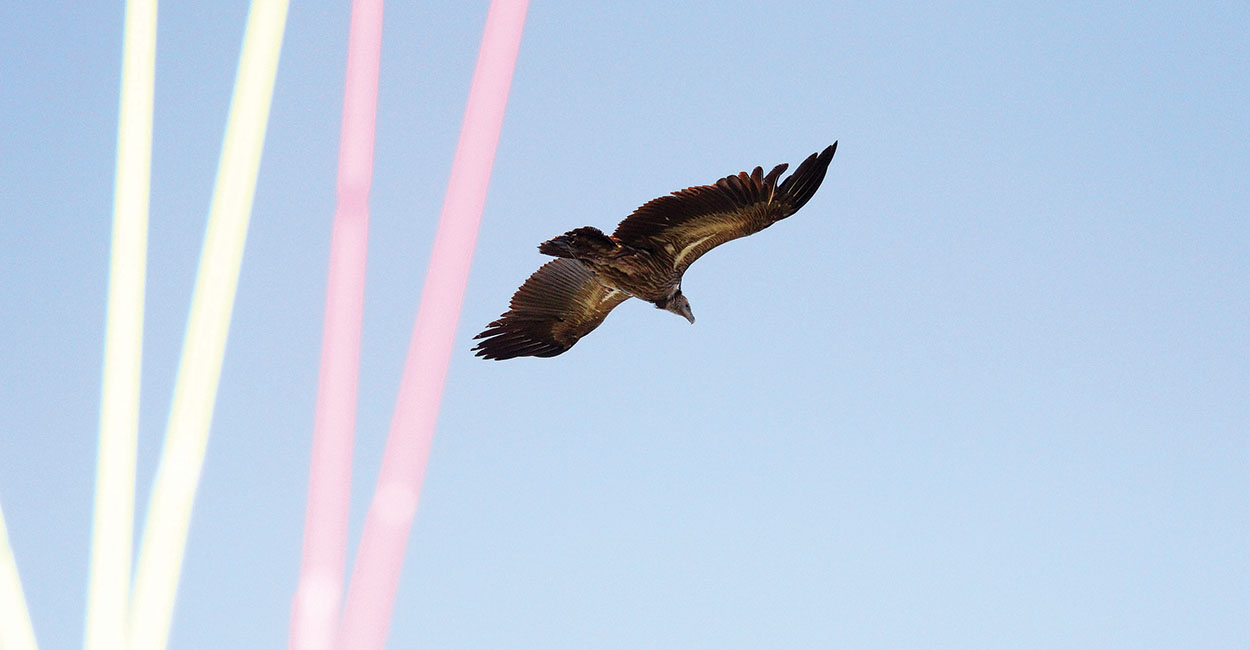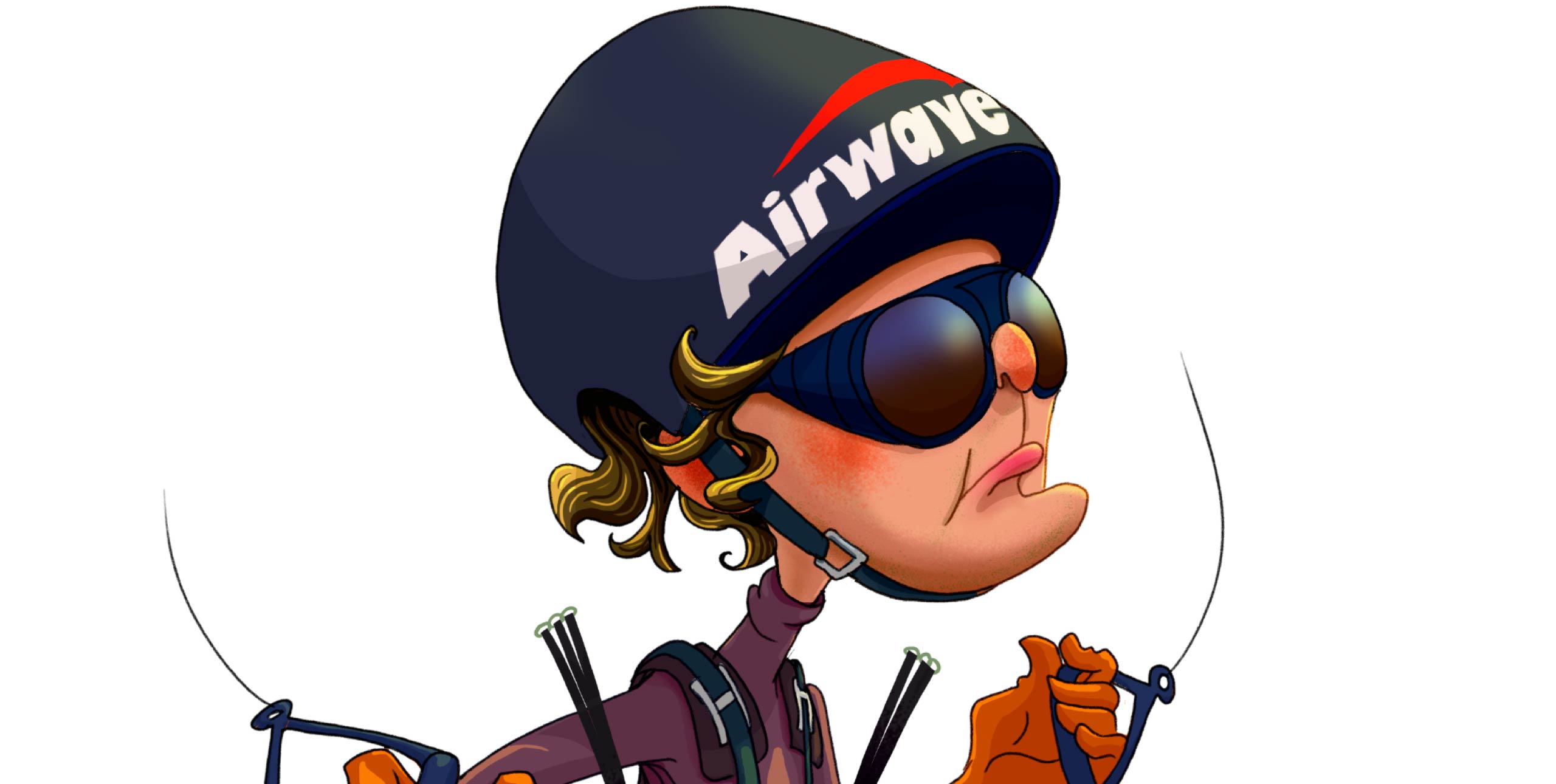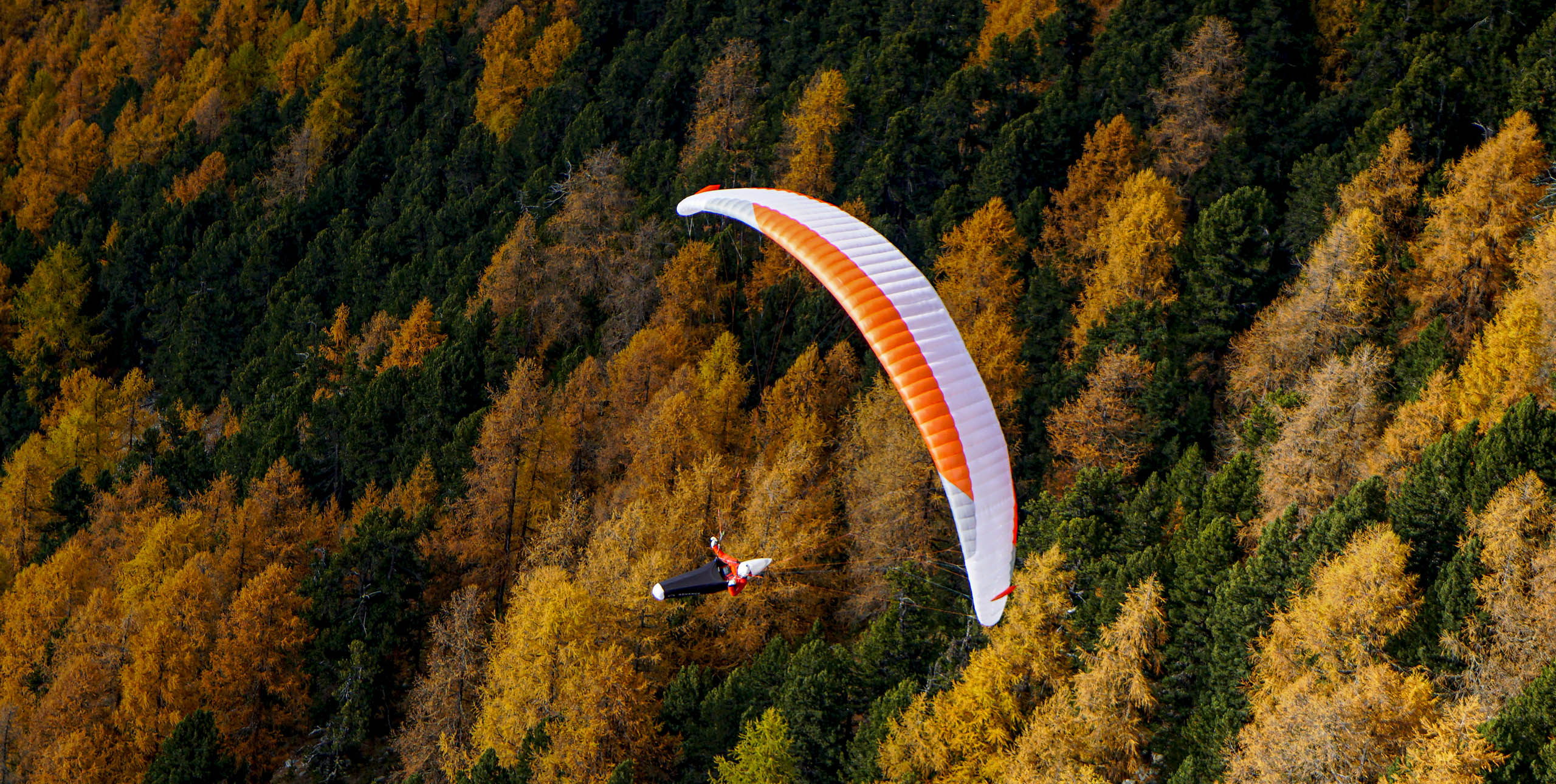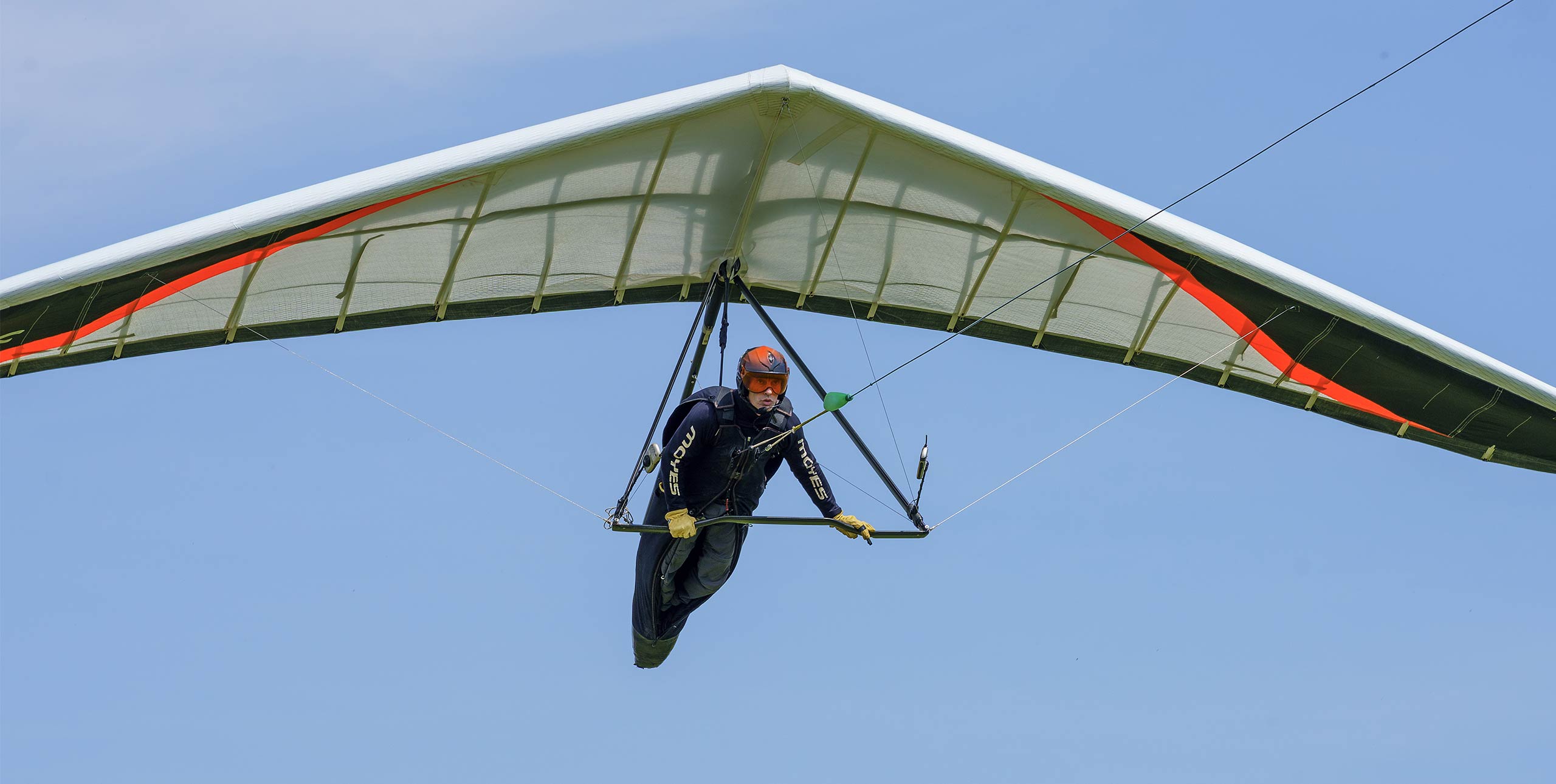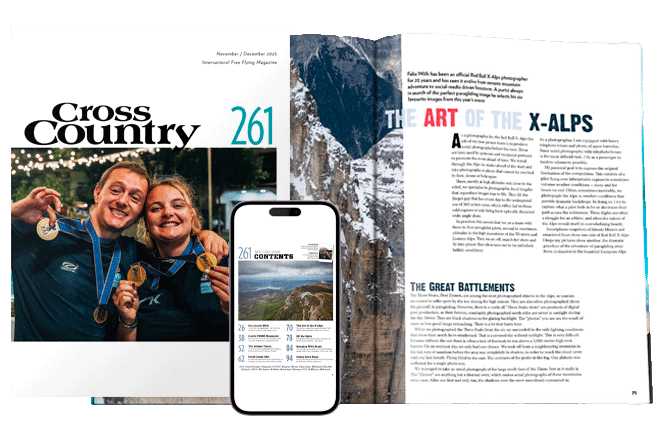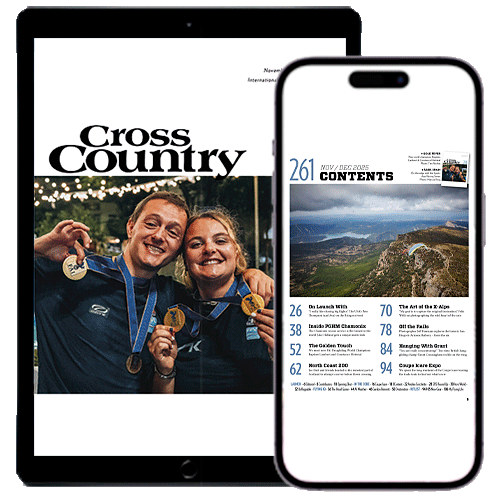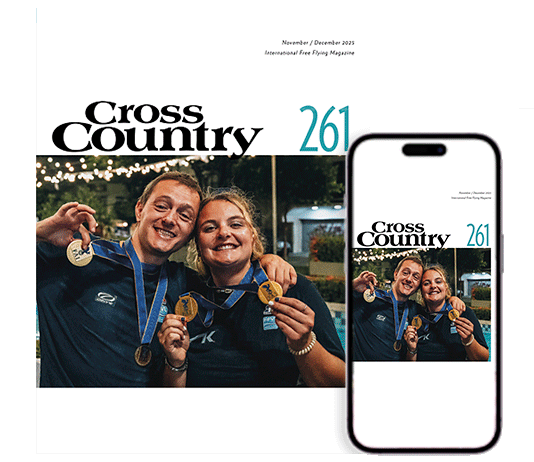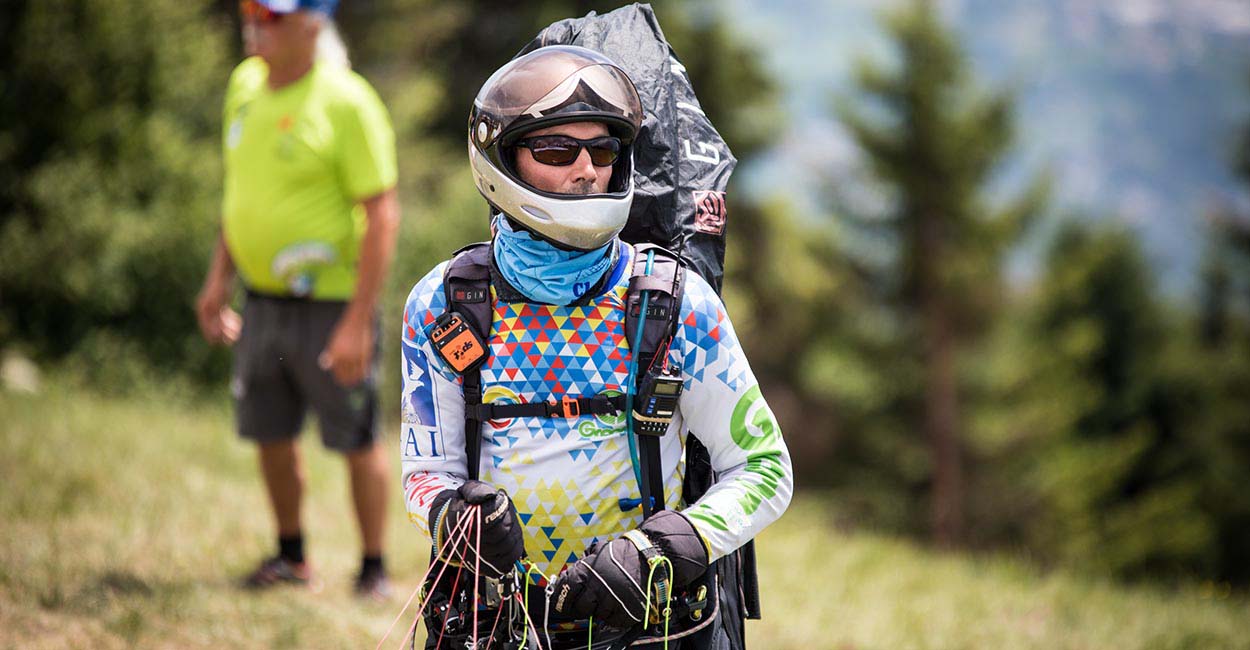
You have to be comfortable to fly well – in this article Cross Country Magazine editor Ed Ewing looks at some of the small pieces of kit that can really help you feel relaxed and comfortable when flying XC. That way you’ll be free to think about the things that really matter, meaning you’ll fly for longer and go further.
Getting your kit together is an essential part of becoming a good cross country pilot. There is simply nothing worse than turning up at a site with friends ready to fly high and far and realising that you have forgotten your helmet / gloves / batteries / flight instrument. Here are my top ten tips for making sure you don’t make the same mistake.
1. Be prepared.
Yep, the Scout motto holds true. If you are planning to fly XC on Saturday, make sure you prepare your kit on the Friday at the very least. Heck, get it sorted mid-week. Plan ahead and develop a routine about how you prepare – and then stick to it. This way you are far less likely to forget something.
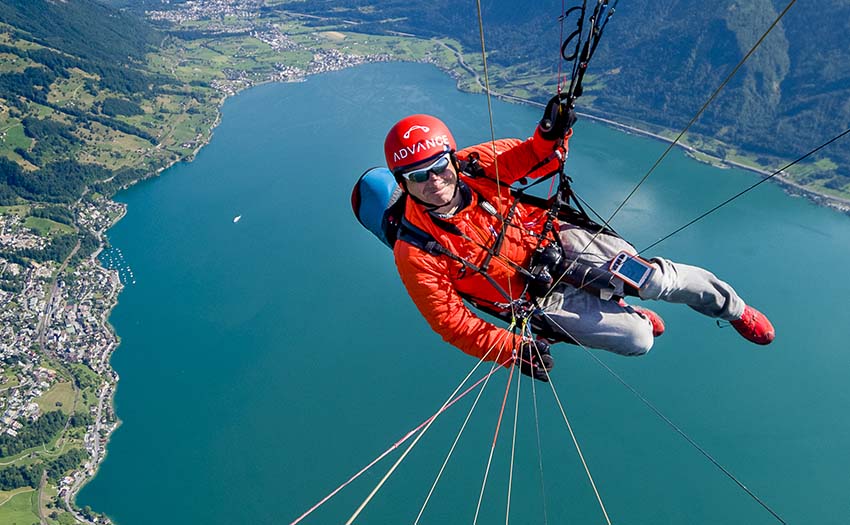
2. Have a checklist.
Yes, I know this is geeky, but in the past I have found this really helps, especially when on a flying trip to a new place where the plan is to “go big” all day. Getting to launch can sometimes take hours – even days if hiking in the hills. Having a checklist of your essentials will help relieve the pressure of forgetting something and totally ruining your day.List everything you need to fly: wing; harness; karabiners; helmet; gloves; vario; satellite tracker; map; flying shoes; flying suit; hook-knife; sunglasses; heat pads; spare batteries; food; whistle; spare contact lenses; money; passport; etc. The list will change pilot to pilot and place to place. Keep it on your phone or in the top pocket of your glider bag and check it before you leave the house.
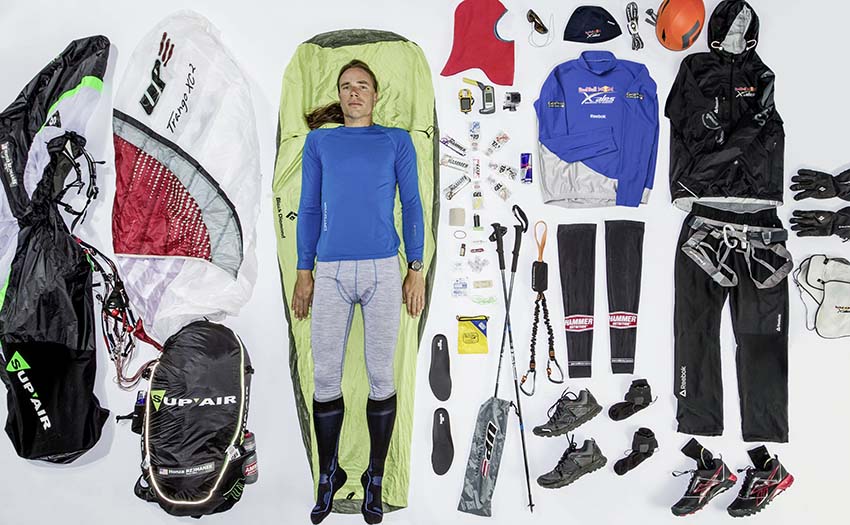
3. Know your equipment.
You will fly better if you are familiar and comfortable with your gear. I don’t mean your glider and harness (that is a given), I mean knowing that your gloves have enough feel and warmth in them before you take off, or that your thermal leggings don’t itch. It means understanding how to route your radio/drinks tube/pee system without having to work it out on launch. All the little stuff adds up: and getting it wrong or having to suddenly unstitch/untie/unscrew something minutes before launch is an easy way to add unnecessary stress to your day. This all means working out what works and what doesn’t before any big day – use winter soaring days to fine-tune your kit.
4. Wear good sunglasses.
Spend some money on them – cheap shades mean discomfort at least, and eye damage at worst. Flying at altitude is the same as skiing at altitude – you can expect to suffer from snow blindness if you fly high for hours in bright sunlight with no shades on. Wraparound sports ones are good as these often have an impact-resistant lens too. Some pilots swear by orange or yellow lenses (they make the clouds “pop” and you can see wisps of cloud more easily), while others find they make everything a bit too intense. Lots of pilots wear ski goggles (great for wind protection), while others use a full-face helmet with visor (great for wind and noise reduction). Whatever you use, take protecting your eyes while flying seriously. Velodrom make good sunglasses for paragliding.
5. Use a drinks system.
Get a drinks bladder with a tube and work out where to store it and how to route the tube. Make sure it can not leak over your harness (uncomfortable and cold) or electronics (expensive) either in flight or in transport. Fill it with something you like, it doesn’t have to be water. Sipping on a sports carbohydrate-powder mix will keep you sharp all flight as well as hydrated; adding a squeeze of fresh lemon or lime will take away any plastic taste of the water. Pack enough water to last the flight and any retrieve / walk-out. Get into the habit of taking regular sips throughout your flight (again, practice this on soaring days as it is yet another thing that takes getting used to doing). Wash and dry the bladder regularly. Find one in a local sports store or online.
6. Use a pee tube or pee system.
Holding it in for hours is never good – it is distracting, uncomfortable and can even force you to land (or wet yourself). The XC Pee is a standard for many male XC pilots: it consists of a single-use medical-grade condom with a long piece of plastic tubing. Again, work out how to use this before you get to launch. Etiquette demands that you only ever pee on glide, and never in the thermal with other pilots below you (I know, but some people need told). For women, the She-P (www.she-p.com) is a system developed by divers that some pilots have adopted for flying. Some pilots on long-distance missions also wear adult nappies (diapers, available in chemists/drug-stores), which work well in flight. Whatever you use, carry a plastic bag to put everything in after you have landed.
7. Store your stuff.
I like to use clear waterproof bags to pack all my bits and pieces in – the sort of thing you might pack an iPad in to take it to the beach, or a dry bag. As well as being strong, it means you can instantly see where your stuff is. They are especially good for things you only need occasionally: spare batteries; inner gloves; heat pads; pen knife/multi-tool; Sim cards; buff; paracetamol; toilet paper; pen; etc. Bags also make packing your harness easier. When it comes to laying out on launch it means all your gear is kept in one place – and you can see it – and it doesn’t end up strewn across the ground. Best place to buy is Amazon or eBay.
8. Streamline yourself.
I know, some of us should never wear speed arms or tops, but, speed tops do several things. They streamline your upper body so that when you are in the air you don’t get in your own way. They reduce drag created by you, the pilot (better for glide). They are warm in the cold; and they protect you from sunburn in hot sun. So there’s no reason not to! Available here.
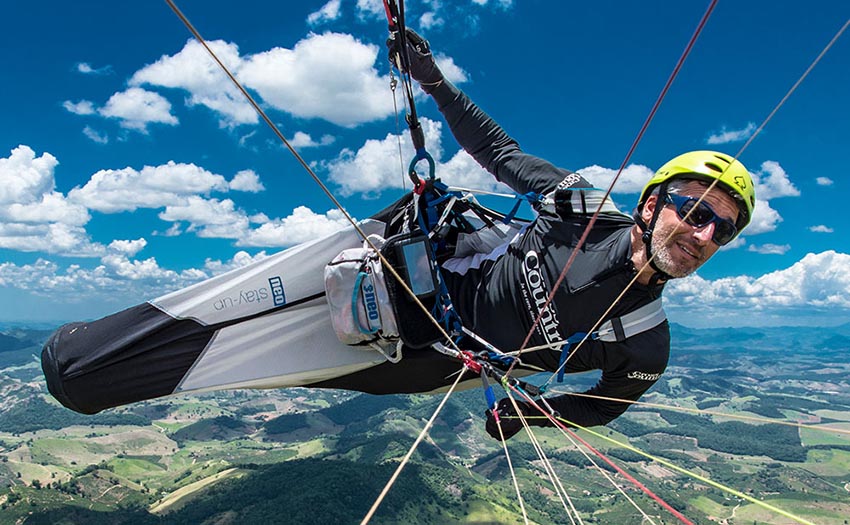
9. Pack an emergency kit that suits where you are flying.
If you know your flight will take you across miles of wilderness and empty terrain with no phone signal, then imagine what you would need if you had to land there and spend the night out. Pack that. Consider what to put in your “emergency kit”: tree landing kit (some harnesses come ready-supplied, pictured); first aid kit; flares; satellite tracker; solar charger. Get this sorted and you will put your mind at ease, and that means you will have more focus for the flying. If you are staying local, pack for local conditions – no need for bear spray on the dunes of Denmark.
10. Plan to get home.
Pack flip-flops and a spare T-shirt if you have space. Flying a long way all day you will be happy for your warm jacket and your flying boots, but as soon as you are on the ground in the baking summer heat you’ll want to strip all that off and get comfortable. Oh, and don’t forget your hitching sign: hitch-hikers are rare these days, but if you can tell people what you’re up to and who you are from a distance, then your ride home might come along just that little bit quicker. Available here.

